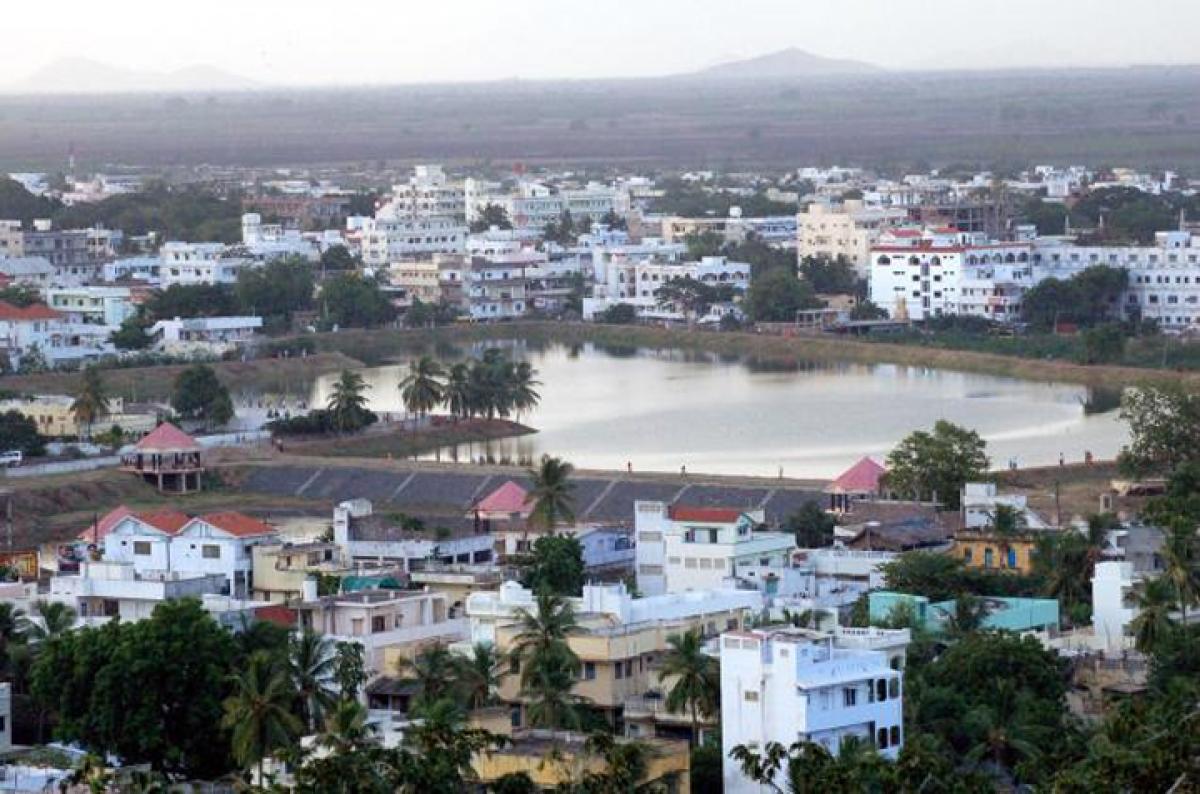Live
- CM Revanth petitions for change in Paleru rly line
- Udupi MP seeks more key highways on top priority
- New diet plan rolled out at welfare hostels
- HRF demands for nation-wide caste census
- SP launches Medicover family health card
- Chiranjeevi Visits Allu Arjun for Lunch Amid Ongoing Legal Turmoil
- Covid ‘scam’ FIR row: Congress pursuing politics of vengeance, says BJP
- Decades-old temple re-opens after 46 years in Sambhal
- Chandrababu to Inspect Polavaram project amid security measures tomorrow
- Aaditya Thackeray Calls For EOW Probe Into Mumbai's Rs 7,000 Crore Road Project
Just In
Specialized Mini capitals for Mega Development of Amaravati

28 Oct 2015 3:27 PM IST

x
Highlights
History repeated itself after 18 centuries, when the foundation stone for Andhra Pradesh\'s new capital Amaravati was laid down by Prime Minister at Uddandarayunipalem on 22-10-2015.
History repeated itself after 18 centuries, when the foundation stone for Andhra Pradesh's new capital Amaravati was laid down by Prime Minister at Uddandarayunipalem on 22-10-2015.

Amaravati, the new capital of Andhra Pradesh, is set to be an amalgamation of ‘navratnas’- knowledge city, financial city, health city, tourism city, government city, sports city, electronics city, justice city and education city.
It is better to develop ten cities as “specialized mini capitals” for development of navratnas in each city along with Amaravati appears to be a good solution rather than investing only in one mega capital city.
The proposal is to develop multiple urban nodes such as Visakhapatnam, Vijayawada and Chittoor on an equal footing and make one of them an administrative headquarters is good move. But this might need a political necessity and it a good sensible move. This network cities model can ensure balanced and dispersed development, and its successful implementation is not only important for the residual State of Andhra Pradesh but also to other States, which are grappling with the issue of rapid urbanization.
Over the past few years, urban policy in Andhra Pradesh and other places had gone wayward. Resources and attention were bestowed only on one alpha city — usually the capital — creating a humongous urban agglomeration at the expense of other potential urban centers. For instance, Hyderabad had grown to become the largest urban center in the State with a population of about 7.75 million while the next big city, Visakhapatnam, has a population of only 1.73 million. Though historic reasons and location advantage contributed to the differences in growth, myopic policies have exacerbated it and skewed the urban pattern.
Policies that failed
Since the 1980s, various policies have been insisting on developing small and medium towns. The plan was to improve infrastructural facilities and employment opportunities in these towns and make them centers of growth. The reasoning was that developing carefully chosen places would fairly disperse urbanization. State and central governments together spent about Rs. 1,600 crore on improving 1,854 towns, but it did not yield the desired result.
In 2005, the governments concluded that big cities continued to dominate the spatial pattern of urbanization. They gave up the policy to develop small and medium towns and started to fund only urban services projects in these places.
They blamed the lack of availability of land, inadequate funds and inability of local bodies to execute the schemes for the failure, but never admitted that their own ad hoc actions undermined the project.
Since the 1990s, after economic liberalization set in, the policies and programmes clearly shifted in favour of promoting metropolitan cities as destinations of global and domestic capital. Policymakers overlooked the rich urban diversity and gravitated towards mega cities. Empirical studies shows that substantial urban growth remained outside large cities, the state paid less attention to them. The economic potential of these smaller centers remained inadequately harnessed.
This approach continues, and the mega city model has not yet changed. For instance, the steering committee on urbanization for the Twelfth Five Year Plan has recommended that the government develop satellite towns and twin cities near existing metropolises to manage growth. It is silent on dispersing urbanization. In this context, the proposal to develop medium-sized towns in the State of Andhra Pradesh assumes significance and could mark the beginning of the much-needed course correction.
The A.P.,state has a better distribution of urban centres than Telangana. There are about 32 towns with a population of more than one lakh compared to the 14 towns in Telangana. Most of these towns have registered more than 20 per cent growth in their population between 2001 and 2011, and possess great potential to emerge as important urban centers in future.
The way forward
Developing them is critical to ensuring that the benefits of economic growth reach vast rural hinterlands. Drawing from evidence across the world, scholars of urbanization have emphasized that the growth of intermediate urban centers is particularly important at times when the process of globalization is justifying “concentration of activities in the large cities, increasing the already significant regional differences in living conditions and productivity.”
The way forward is to carefully select cities to network and plan them well to provide good quality of life; emphasis on public transport, social housing and environmental protection; put in place a good governance structure; and empower local bodies. It is the time for the incumbent Government to develop other mini cities are par with Amarvathi will yield good results for overall development and inclusive growth of AP.
G.Rajendera Kumar

Next Story
More Stories
ADVERTISEMENT
© 2024 Hyderabad Media House Limited/The Hans India. All rights reserved. Powered by hocalwire.com






